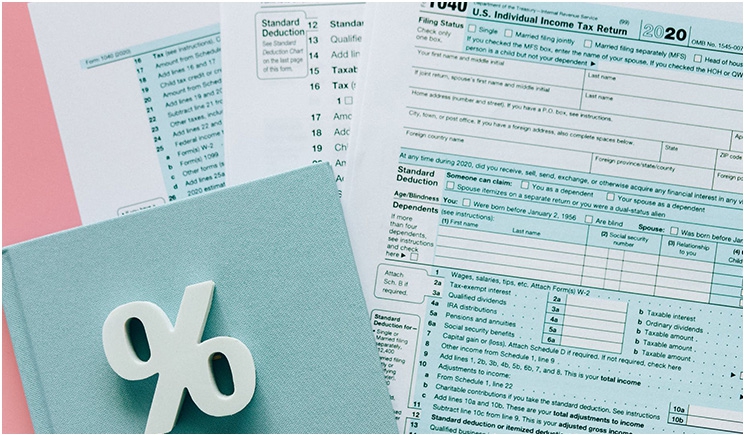
What’s scarier than having a tooth extraction? Poor tax planning. Not tapping into tax savings opportunities available to them, or the many ways to reduce their tax burden, leaves many dental practices with less room for growth and profitability.
R&D Incentives
One of the least known tax strategies is the research and development tax credit, which can be used to take advantage of a huge tax savings. In a recent study conducted by UHY Advisors, we found nearly $150,000 in R&D credits for a dental client. For dentistry, items indicating that your practice may be performing R&D and perhaps eligible for the credit include:
- Dental laboratory activities
- Restoration procedures
- Designing and fabricating prosthetics
- Developing treatment plans and patient evaluation
- Oral surgery
For orthodontics, these items may include:
- Laboratory activities
- Development of treatment plans
- CBCT imaging
- Clear aligner treatment options
- Device design and fabrication
- Novel wire and bracket systems
Employee Retention Credit
For practices that struggled through the global health crisis, the employee retention credit is another way to minimize tax liability and recoup some of the losses from shutdown-related droughts. Created to incentivize employers that kept employees on payroll, this credit is a refundable tax credit against certain employment taxes.
Cash Balance Pension Plans
Most dentists have 401(k) plans, but far fewer utilize cash balance pension plans. While there are pros and cons to this strategy, the fund allocation makes this a very beneficial proposition for the owner. This results in allocations to dentists of several times what can be funded through a 401(k) profit sharing plan.
Entity Structure
There are many types of business entities, such as sole proprietorships, partnerships, professional limited liability companies, corporations, and S corporations. But depending on your practice, one will be more advantageous than the others.
The profits of a C corp are taxed and reported on the corporate tax return, and they’re taxed again once after profits are distributed to shareholders as dividends. Dental practices can avoid this “double taxation” by electing to convert to an S corp structure.
Looking at the entity structure of your practice may reveal a more tax-friendly option, but remember to consider all factors regarding your business when contemplating such a change.
Employing Family Members
Dental practices can pay family members up to $12,000 federal income-tax-free per year as long as the work applies to the business and the family member is of appropriate age. The amount of the wages must be reasonable for the services provided.
Bonus Depreciation
The Tax Cuts and Jobs Act passed in 2018 increased first-year bonus depreciation to 100%. It applies to certain long-term assets placed in service after September 27, 2017, and remains in effect until January 1, 2023. Bonus depreciation primarily would apply to all dental equipment, furniture, and certain leasehold improvements.
Cost Segregation Studies
Cost segregation studies can be completed on any property that generates income. The study accelerates depreciation, resulting in an increase in depreciation expense and an improvement in cashflow.
A cost segregation study breaks the property into different components to identify assets with a shorter recovery life to decrease the 39-year depreciation schedule into a five-year, seven-year, or 15-year period to secure bonus depreciation.
Examples of items specific to a dentist office that would qualify for an accelerated recovery life include specialty plumbing lines and electrical connections dedicated to dental equipment, exam room sinks, receptionist counters, base cabinets and countertops, millwork, accent lighting, specialty flooring, and improvements made to the land such as landscaping, parking lots, and site signage.
Succession Planning
The current market is very favorable for sellers. Dentists are constantly receiving offers on their practices, and the market can be compared to the residential real estate market in some cases. The allocation of the purchase price can be applied to assets that generate capital gains versus ordinary gains, essentially cutting the tax rate in half.
Donor-Advised Funds
This strategy is for individuals, but it can result in substantial tax savings. For those with charitable endeavors, an income tax deduction is generated when the deposit is made into the donor advised account. Then the account holder can decide when and where they would like to pass the funds onto a charitable organization.
Business Vehicle Expense
Subject to requirements, this is perhaps one of the more straightforward tips, but it is commonly unknown to most dental practice owners. The vehicle would need to meet the IRS qualifications for a business vehicle, and it may result in a large writeoff. Certain vehicles can result in a 100% deduction in the year put into service.
Your Turn
Make it a priority to speak with your tax advisor to explore all tax savings strategies. As you meet to discuss this year’s taxes and plan for next year, you can examine key areas together and identify potential problems and solutions, maximize your tax savings, and reduce your tax exposure.
Mr. Markey is a managing director of UHY Advisors with nearly 40 years of experience providing tax planning strategies and advisory services to long-standing dental clients. He is an influential member of UHY’s Great Lakes region, serving on the executive committee for over 25 years, and has been one of its longest tenured members since the firm’s inception in 1968. He can be reached at dmarkey@uhy-us.com or uhy-us.com/professional/daniel-markey.
Related Articles
Life Insurance Strategies Offer Tax Advantages Over Retirement Funds
The SECURE Act Inserted a Tax Time Bomb Into Your Retirement Plan
How the New Tax Laws Will Affect the Dental Industry











